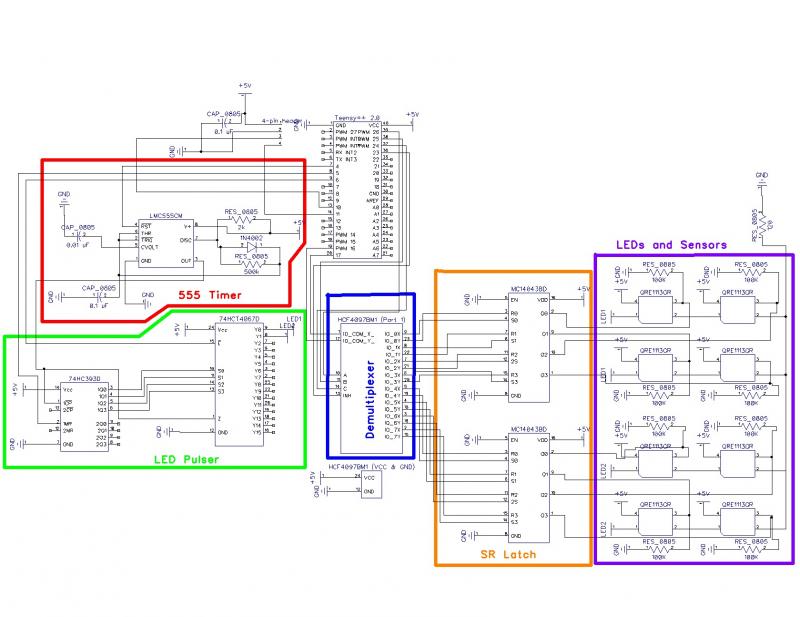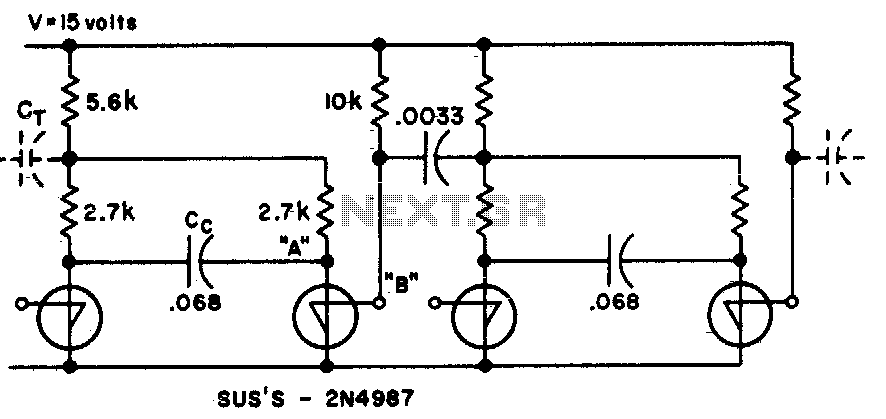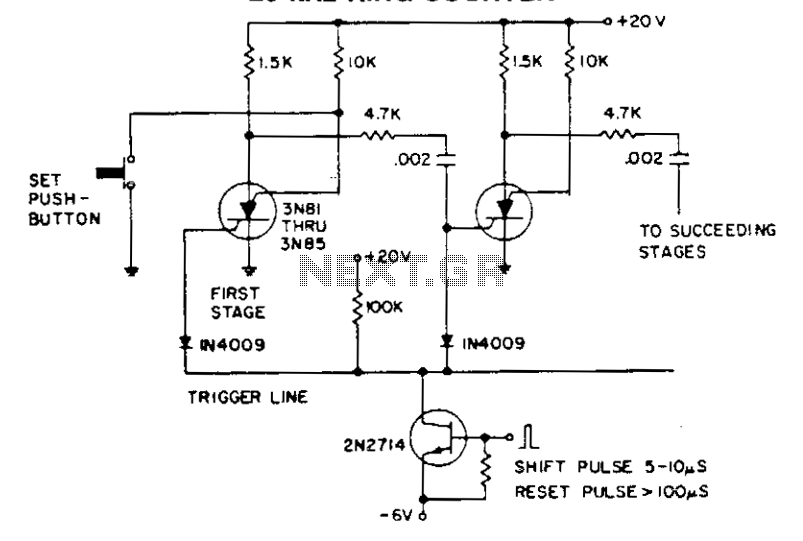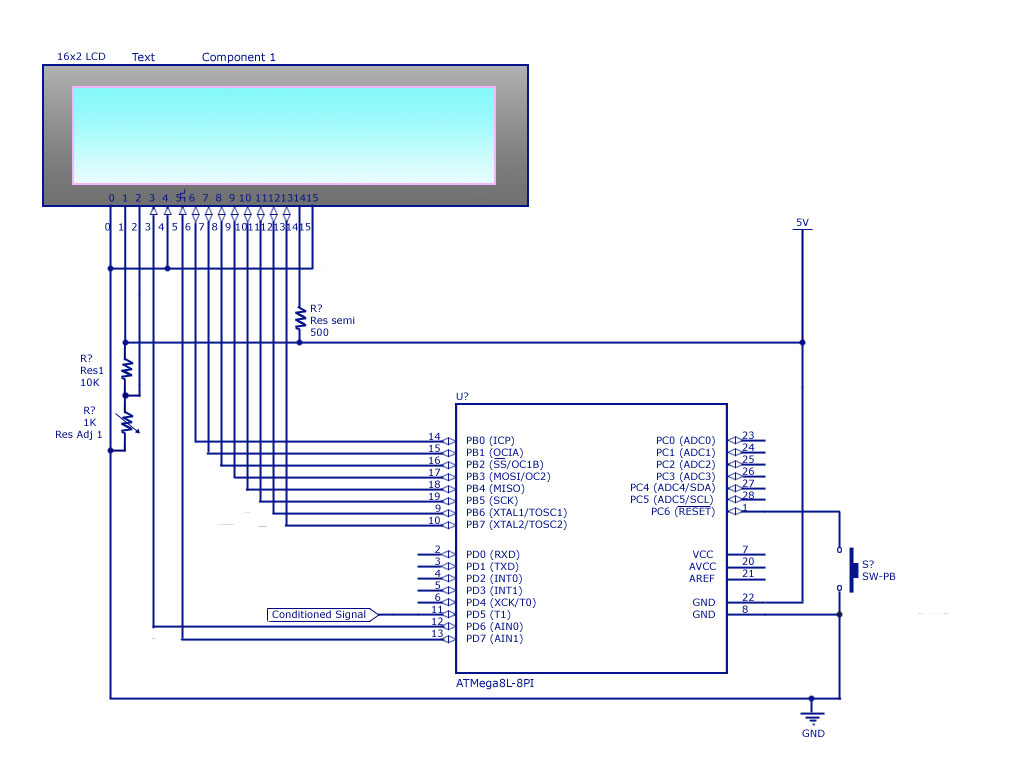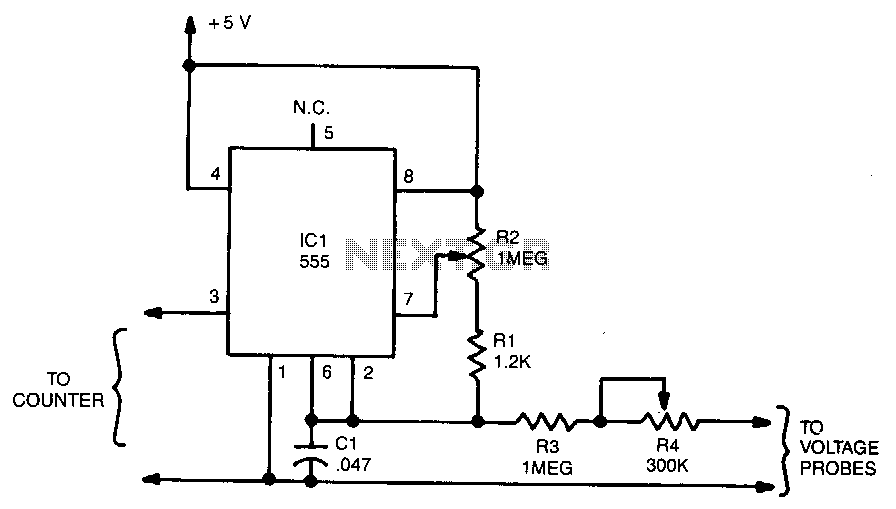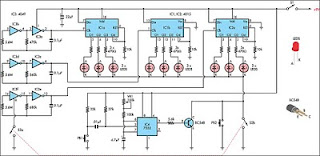
Binary counter
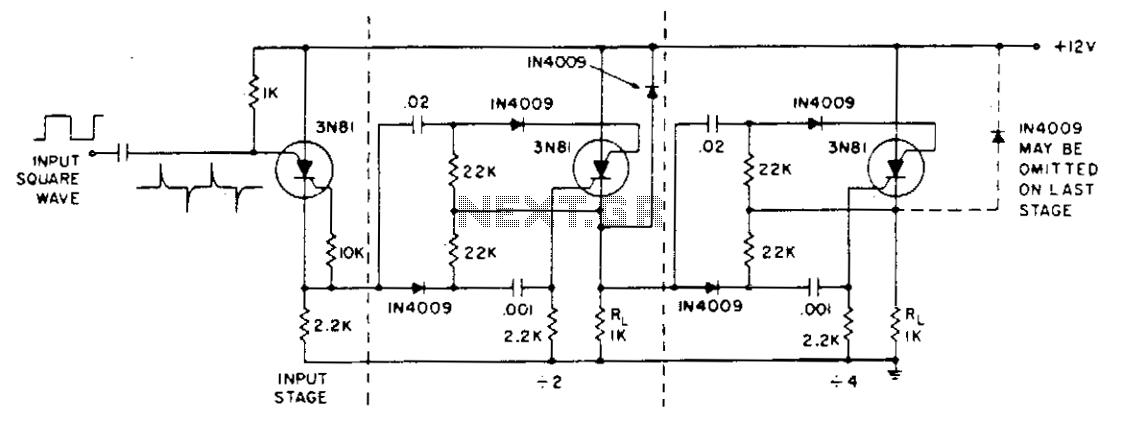
Stages are triggered by the positive-going edge. The silicon-controlled switch (SCS) is turned on at the cathode gate and turned off at the anode gate. The anode-to-cathode IN4009 diode suppresses positive transients while the SCS is recovering. The input stage generates fast positive edges to trigger the counter.
The described circuit utilizes a silicon-controlled switch (SCS) for controlled switching applications. The SCS operates by being triggered on when a positive voltage is applied to the cathode gate, allowing current to flow from the anode to the cathode. The SCS remains in the on state until a negative voltage is applied to the anode gate, effectively turning it off. This method of control is particularly useful in applications requiring precise timing and switching capabilities.
In conjunction with the SCS, a diode (IN4009) is employed to protect the circuit from positive voltage transients that may occur during operation. The diode is oriented to conduct in the reverse direction, thereby clamping any excessive voltage spikes that could potentially damage the SCS or other components in the circuit. This transient suppression is crucial during the recovery phase of the SCS, where it may be vulnerable to high voltage levels.
The input stage of the circuit is designed to generate fast positive edges, which are essential for triggering a counter. This rapid transition can be achieved through a variety of methods, such as using a Schmitt trigger or a fast comparator, ensuring that the counter receives clean and distinct trigger signals. The ability to produce sharp edges is vital for maintaining the accuracy and reliability of the counting process, as it minimizes the risk of false triggering or missed counts.
Overall, the combination of the SCS, diode protection, and fast edge generation creates a robust circuit capable of handling transient conditions while providing reliable switching and counting functionalities.Stages are triggered by the positive going edge. The scs is turned on at the cathode gate; turned off at the anode gate. The anode-to-cathode IN4009 suppresses positive transients while the scs is recovering. The input stage generates fast positive edges to trigger the counter.
The described circuit utilizes a silicon-controlled switch (SCS) for controlled switching applications. The SCS operates by being triggered on when a positive voltage is applied to the cathode gate, allowing current to flow from the anode to the cathode. The SCS remains in the on state until a negative voltage is applied to the anode gate, effectively turning it off. This method of control is particularly useful in applications requiring precise timing and switching capabilities.
In conjunction with the SCS, a diode (IN4009) is employed to protect the circuit from positive voltage transients that may occur during operation. The diode is oriented to conduct in the reverse direction, thereby clamping any excessive voltage spikes that could potentially damage the SCS or other components in the circuit. This transient suppression is crucial during the recovery phase of the SCS, where it may be vulnerable to high voltage levels.
The input stage of the circuit is designed to generate fast positive edges, which are essential for triggering a counter. This rapid transition can be achieved through a variety of methods, such as using a Schmitt trigger or a fast comparator, ensuring that the counter receives clean and distinct trigger signals. The ability to produce sharp edges is vital for maintaining the accuracy and reliability of the counting process, as it minimizes the risk of false triggering or missed counts.
Overall, the combination of the SCS, diode protection, and fast edge generation creates a robust circuit capable of handling transient conditions while providing reliable switching and counting functionalities.Stages are triggered by the positive going edge. The scs is turned on at the cathode gate; turned off at the anode gate. The anode-to-cathode IN4009 suppresses positive transients while the scs is recovering. The input stage generates fast positive edges to trigger the counter.
